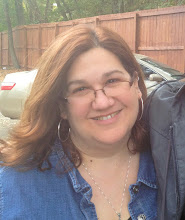Notes on Frankenstein : Themes and Contexts
Gothic novel
Ø Elements of the supernatural
o The “monster”
o The defining moment where the monster comes to life. . .immortalized and parodied in everything from Abbott and Costello Meet Frankenstein to The Simpsons
Ø Use of weather to establish mood
Ø Nature imagery
o The bucolic elements near Geneva
o The glacier, foreshadowing the denouement in the Arctic wasteland
o Nature personified as a force with power
Ø Odd coincidences and leaps of faith
o Death of everyone in Victor’s circle, and NO ONE CONNECTS THE DOTS! AND HE DOESN’T CONFESS! BECAUSE HE IS A DORK!
o A swift journey of three hundred miles. . .
Ø Byronic hero (although, admittedly, V.F. takes the cake for emotional disturbances and indications of a tortured conscience)
o Victor’s inanition and emotional torpor after seeing his creation
o Hallucinatory imagery
o The direct mind-body connection between V.F.’s guilt and his physical health
Ø Exploration of intellectual constructs
o Ethics, science, family relations, roles of women. . .see below
Science and technology
Ø References to alchemy/pseudoscience
o References to “sciences” obsolete during the time of publication
o Victor’s misappropriation of “standard” science with horrific results
Ø Ethics and creation
o Playing God
o No longer wanting to play God, but, dude, it’s too late. . .
Ø Abortion/reproductive issues
o The female creature is aborted by V.F. himself
o The original “monster” is technically aborted as well—rejected, shunted off to live in the periphery, maligned only because of aesthetics
o Novel’s implications may force readers to analyze their own criteria for the acceptance of others
o Relation to the science of eugenics practiced in America and Europe in the 1920’s and 30’s—mentally handicapped, physically disabled, and depressed people were often forcibly sterilized to prevent replicating their “weaknesses” to their progeny. While this practice is often attributed to Nazi Germany, where it flowered both ways (sterilization AND rich rewards for frequent impregnation of healthy “ideal” Aryan couples), America was just as culpable. Thousands of mental patients were given contraceptive procedures, often without their knowledge. Even today, people with genetic diseases like MS, certain liver or lung diseases, or even chronic forms of depression are sometimes discouraged from reproducing.
Ø Roles of women
o The submissive female
§ Justine, portrayed as an innocent (read: naïve) and slightly stupid
§ Caroline, self-sacrificing and long-suffering
§ Elizabeth, ditto. . .
§ (Begs the question—how much is Shelley extrapolating from her own worldview/life experiences? For all of his supposed equanimity, did her spouse wear the trousers, or did she? Or were there trousers available in a household known for free thinking? Why are we even thinking about this?)
o The female monster
§ Symbolic of the creature’s only hope for a “normal” life
§ Destroyed by V.F. in a fit of panic/pique
§ One could argue that it is interesting that the largely asexual V.F. should not be in the business of creating life—particularly of a gender he really doesn’t “get”. One could argue. Not necessarily successfully. Neat to think about, though, eh? Who else sublimates himself completely in his work and forgets the “love of his life” for entire periods of time? Not to mine the stereotype of the mad scientist, but they don’t typically have fulfilling personal lives. . .
Ø The Monster as “more human than human”
o NOTE: The above quote was pulled from a story by sci-fi writer Philip K. Dick called “Do Androids Dream of Electric Sheep?” that was later turned into the Ridley Scott classic film Blade Runner which in turn led to the White Zombie song. Nothing is entirely original—all three cultural texts owe thanks to Frankenstein for their own creations.
o The monster as a sympathetic creation
o Acts of violence as a means of communication in a world that consistently rejects him
§ He saves a woman from drowning; he attempts to relate normally with the cottagers, but is spurned at every turn
§ His acts of violence are shocking, but not unforeseen—he will do anything to reach out, even in socially unacceptable ways
o Father/child separation anxiety
§ Points of discussion for relevance in a culture of divorce? The child first seeks to please and flatter the missing father figure, which eventually turns to rage—love/hate dichotomy
o A lesson in compassion for reader/character/critic
§ Judge not on appearances! Love your friends, warts and all. Or dead body parts and all.
Ø Literary Allusions
o Milton—“Paradise Lost” epic poem about the fall of man written by the Father of English Epic Poetry (in fairness, there isn’t a LOT of English Epic Poetry, so it’s a dubious title at best)
o Coleridge—“Rime”
o Wordsworth
o Percy Shelley himself

